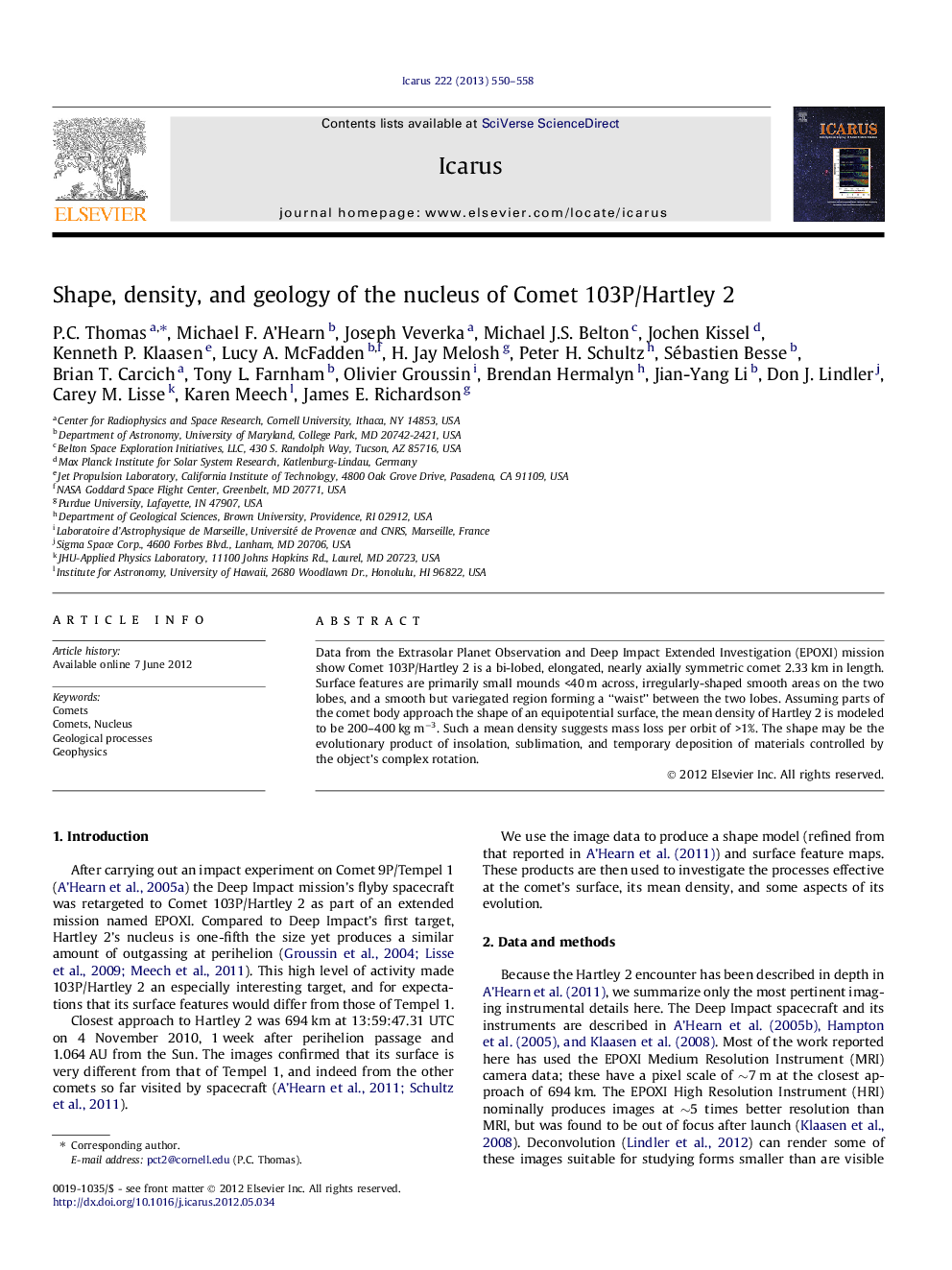| Article ID | Journal | Published Year | Pages | File Type |
|---|---|---|---|---|
| 1773319 | Icarus | 2013 | 9 Pages |
Data from the Extrasolar Planet Observation and Deep Impact Extended Investigation (EPOXI) mission show Comet 103P/Hartley 2 is a bi-lobed, elongated, nearly axially symmetric comet 2.33 km in length. Surface features are primarily small mounds <40 m across, irregularly-shaped smooth areas on the two lobes, and a smooth but variegated region forming a “waist” between the two lobes. Assuming parts of the comet body approach the shape of an equipotential surface, the mean density of Hartley 2 is modeled to be 200–400 kg m−3. Such a mean density suggests mass loss per orbit of >1%. The shape may be the evolutionary product of insolation, sublimation, and temporary deposition of materials controlled by the object’s complex rotation.
► Comet 103P/Hartley 2 has a bi-lobed, nearly axially-symmetric comet nucleus. ► Mass loss rates suggest reduction of the surface by up to several meters per orbit. ► Local processes of deposition and erosion compete to form low-slope surfaces.
